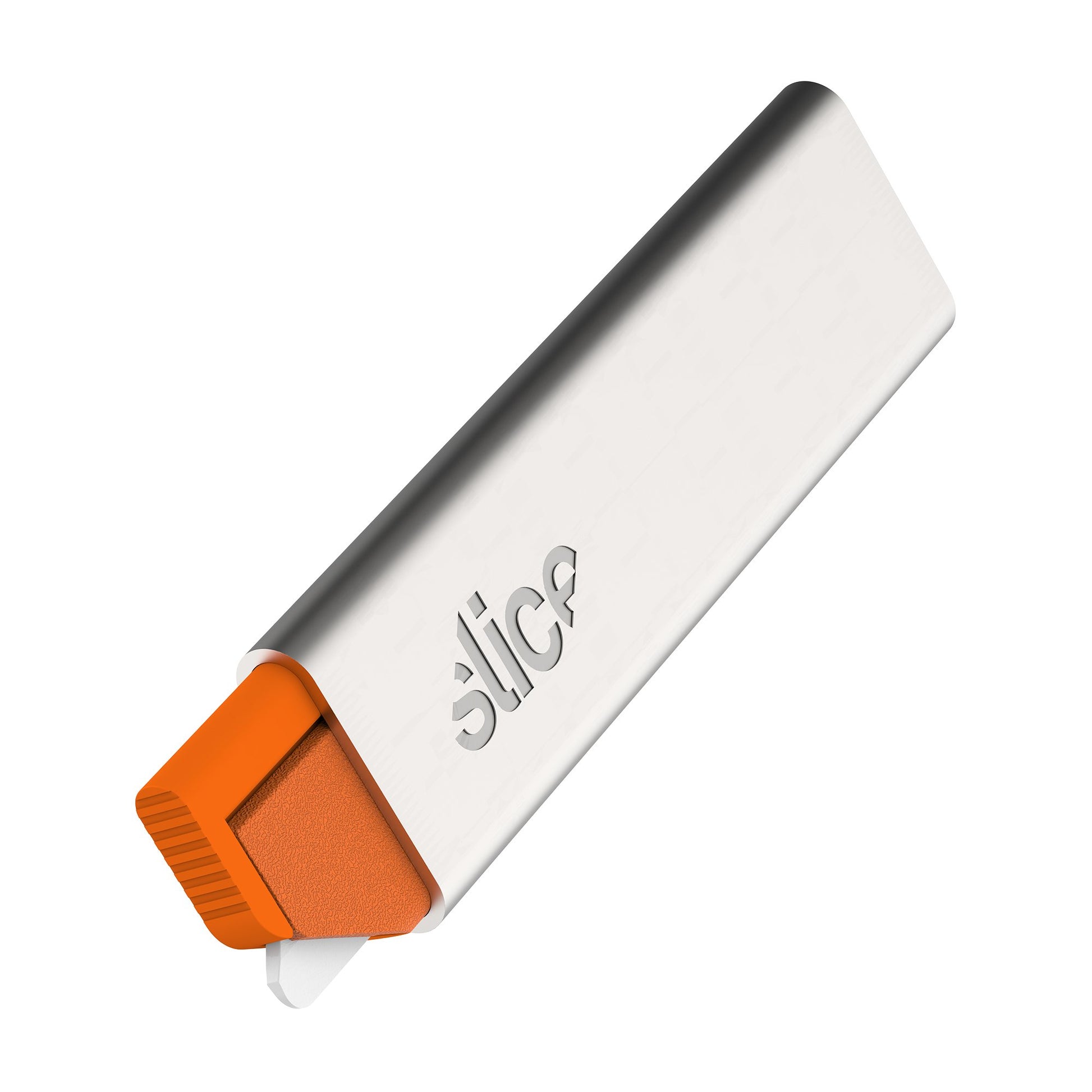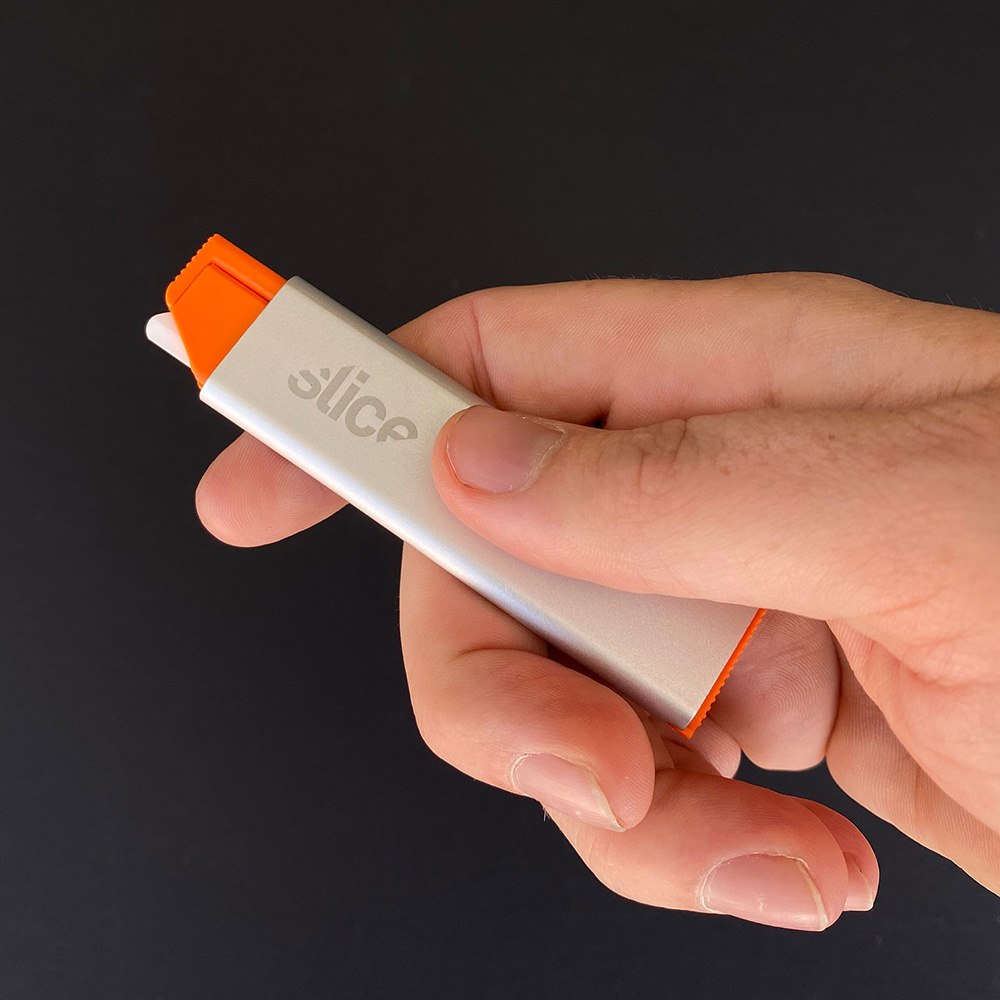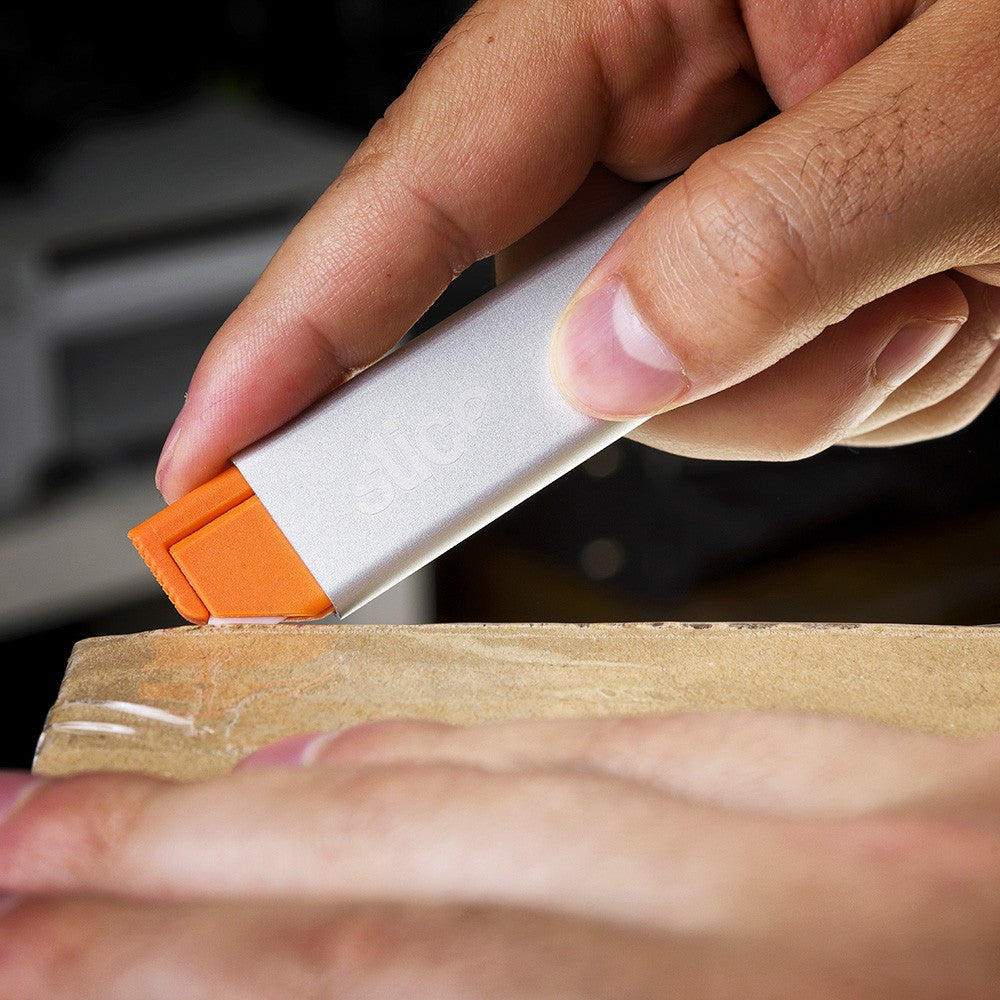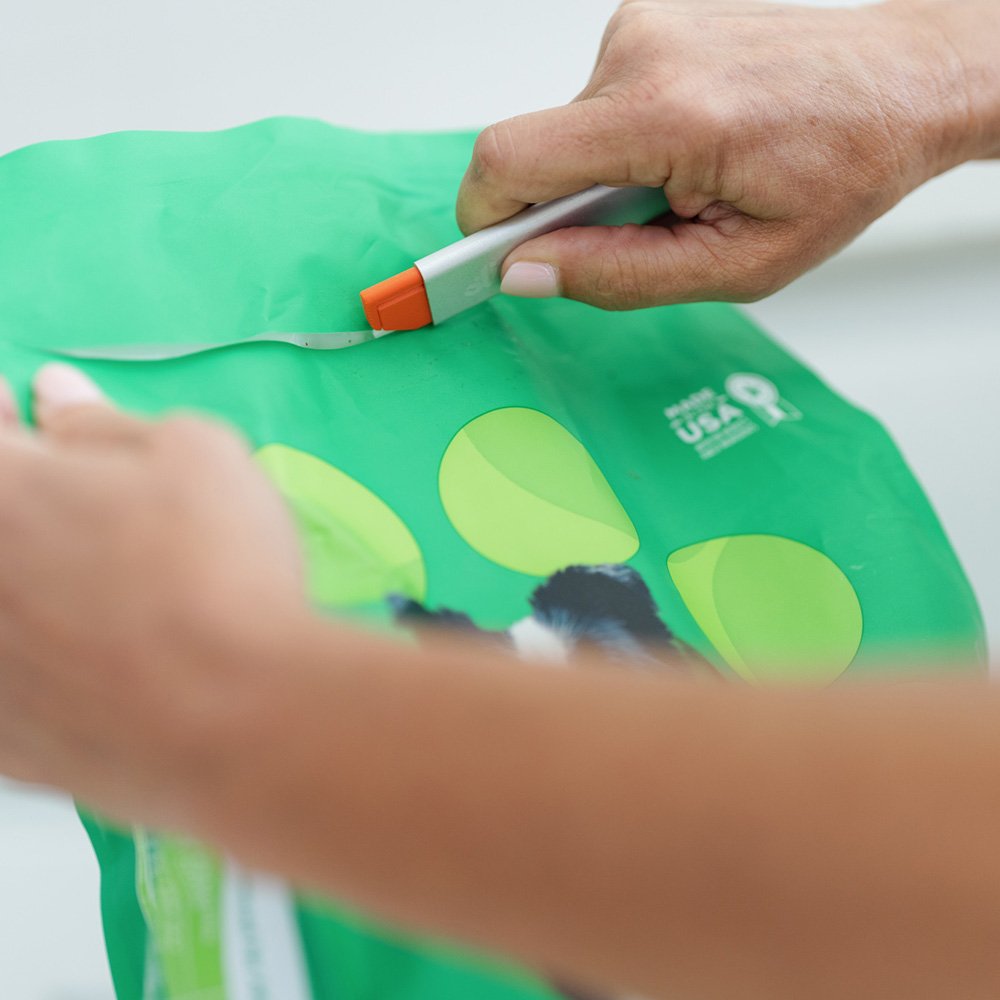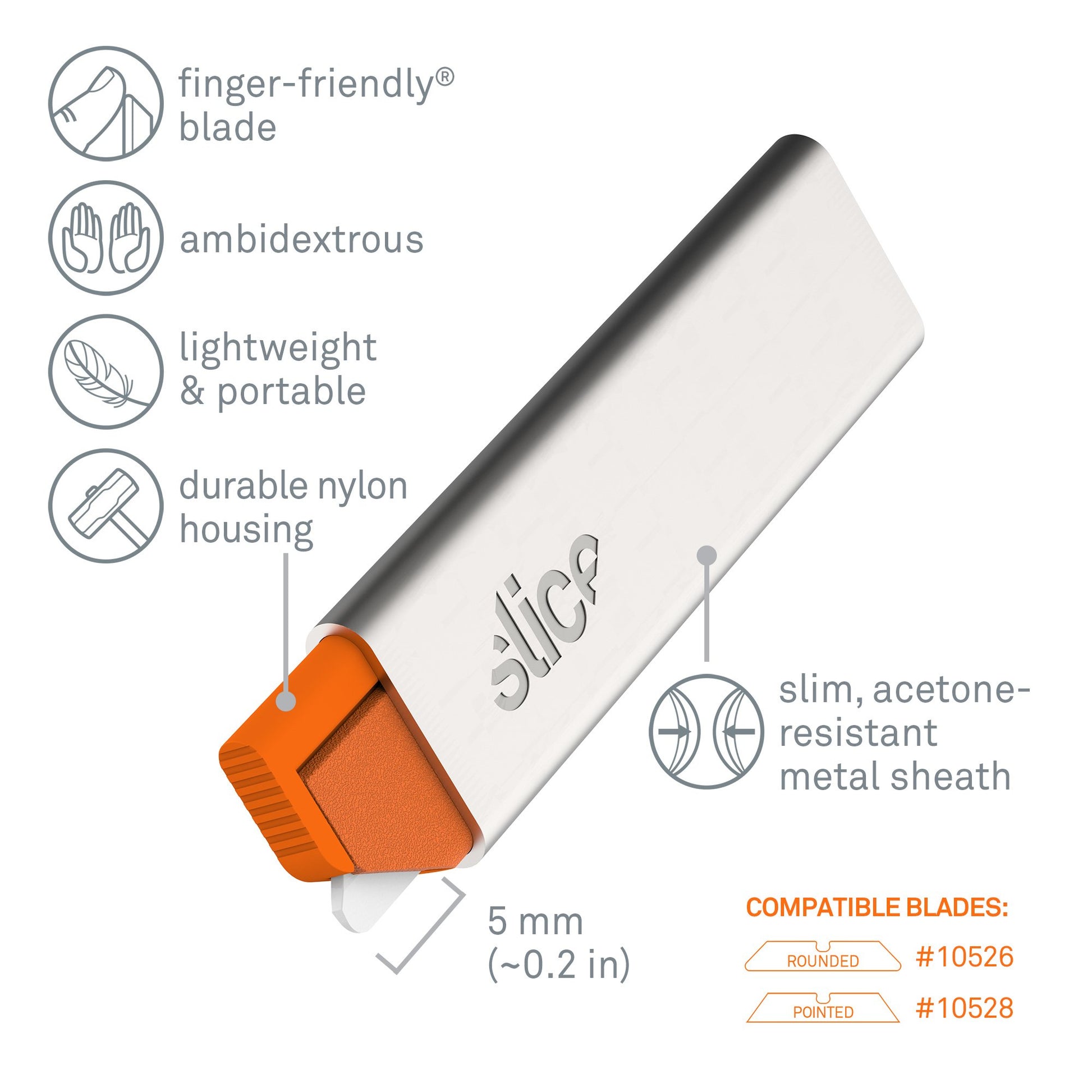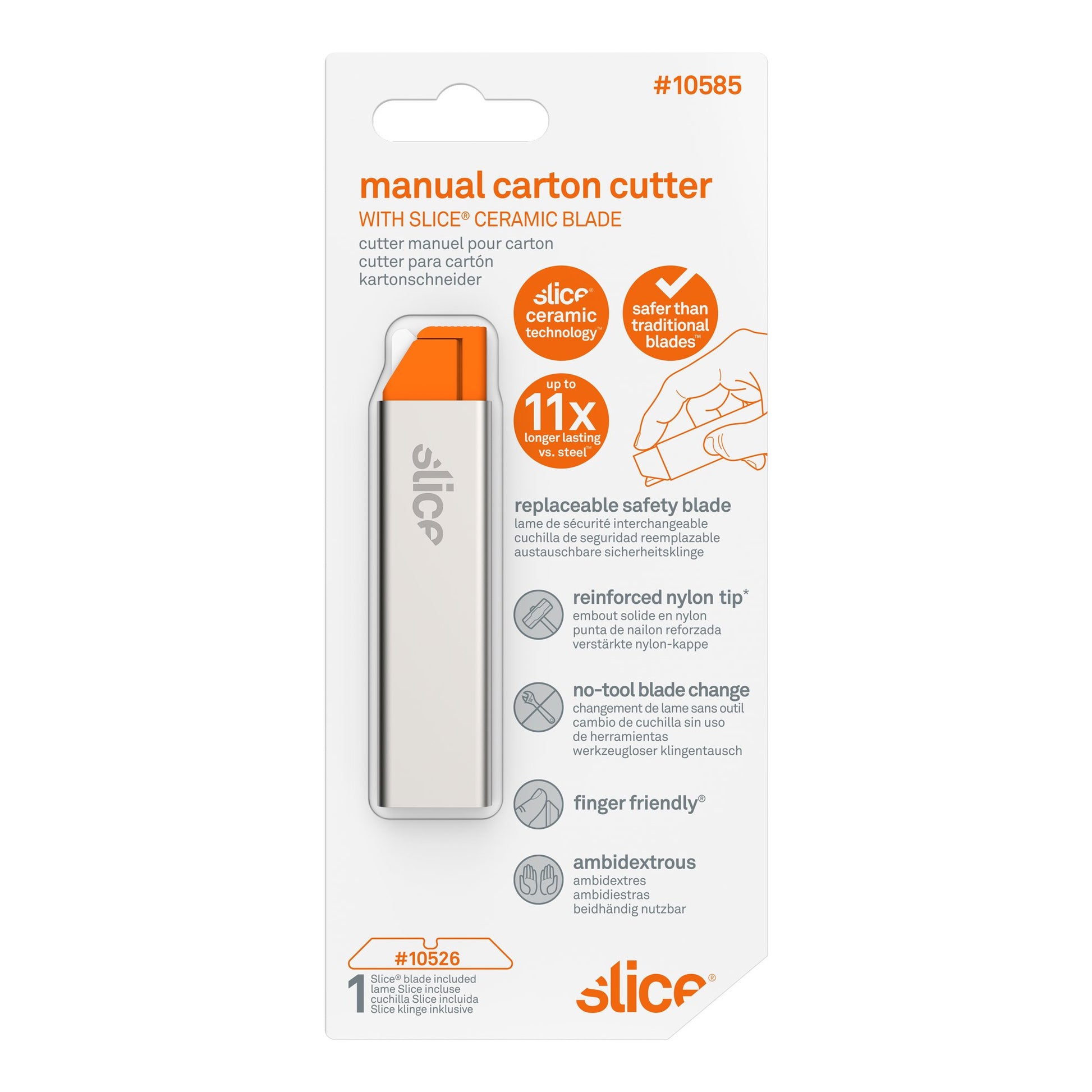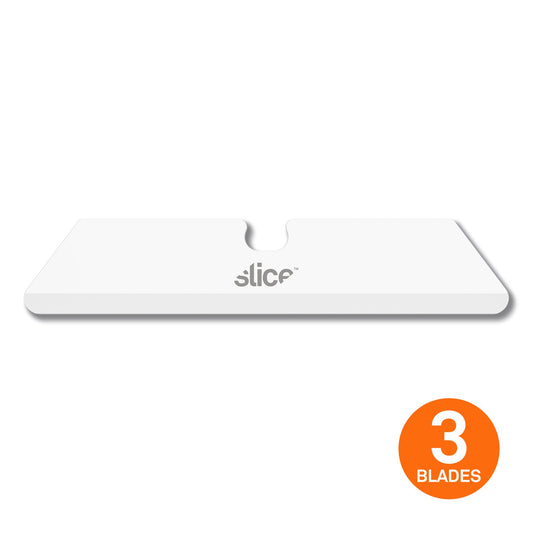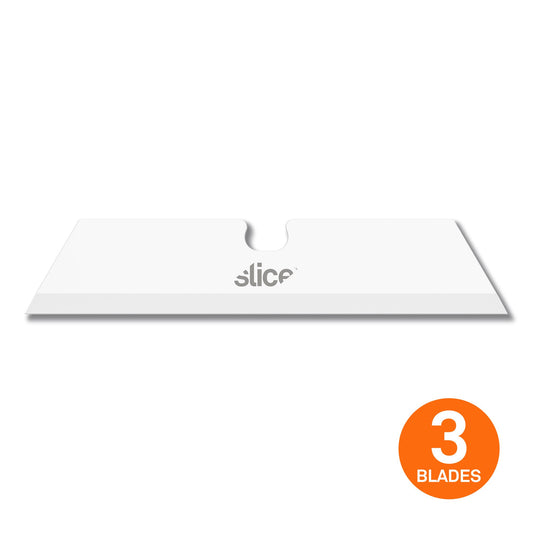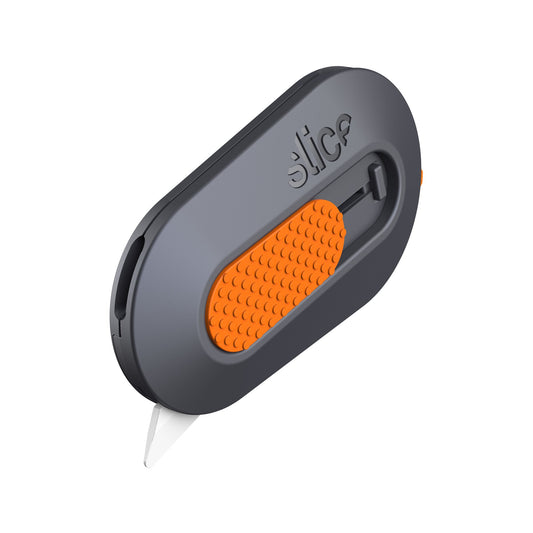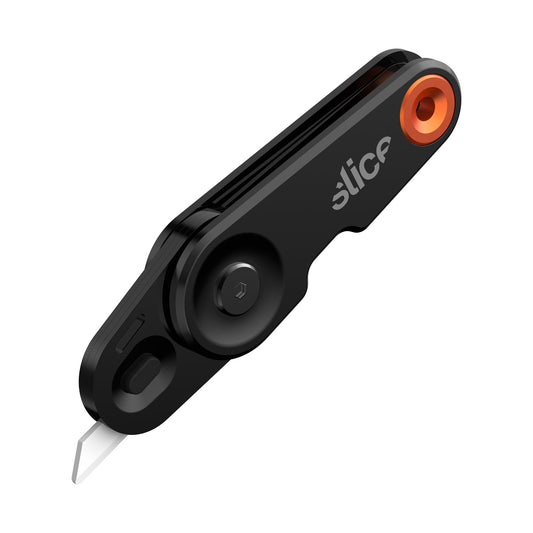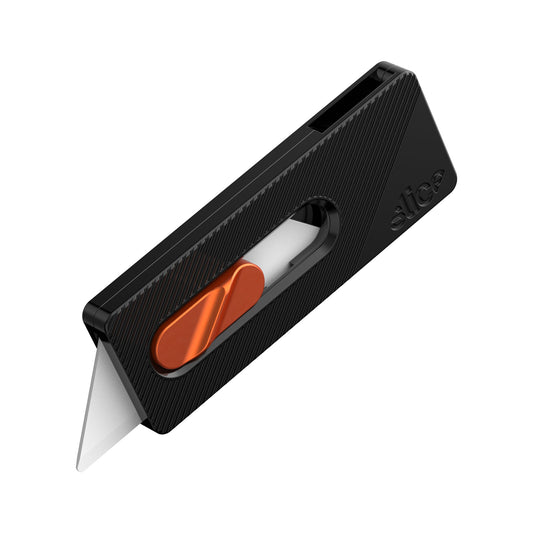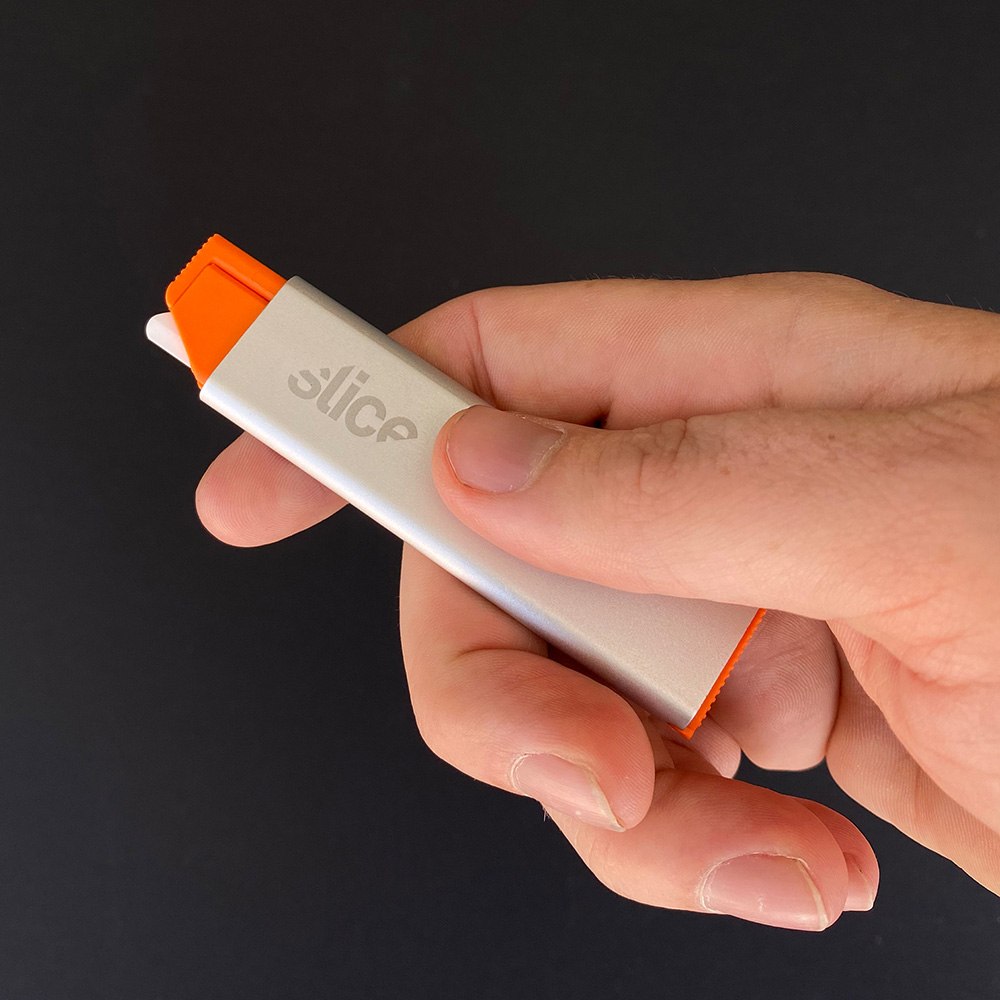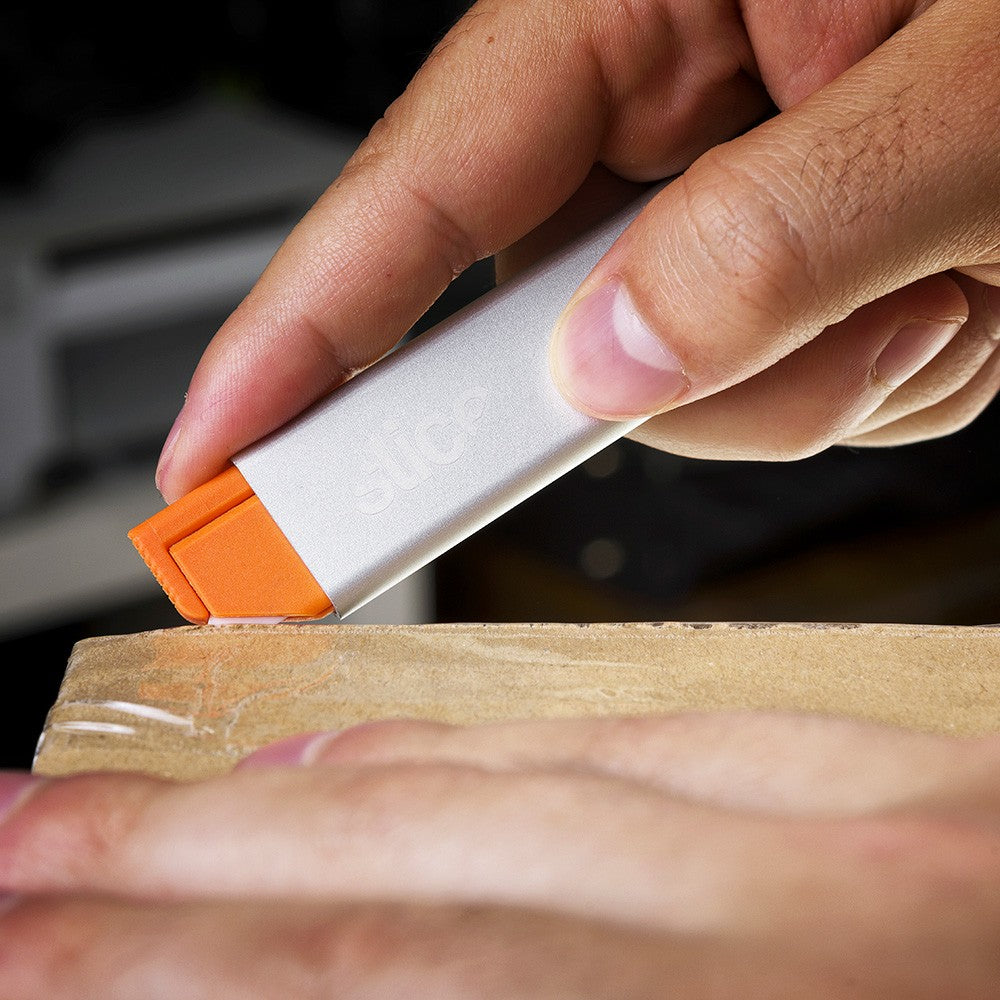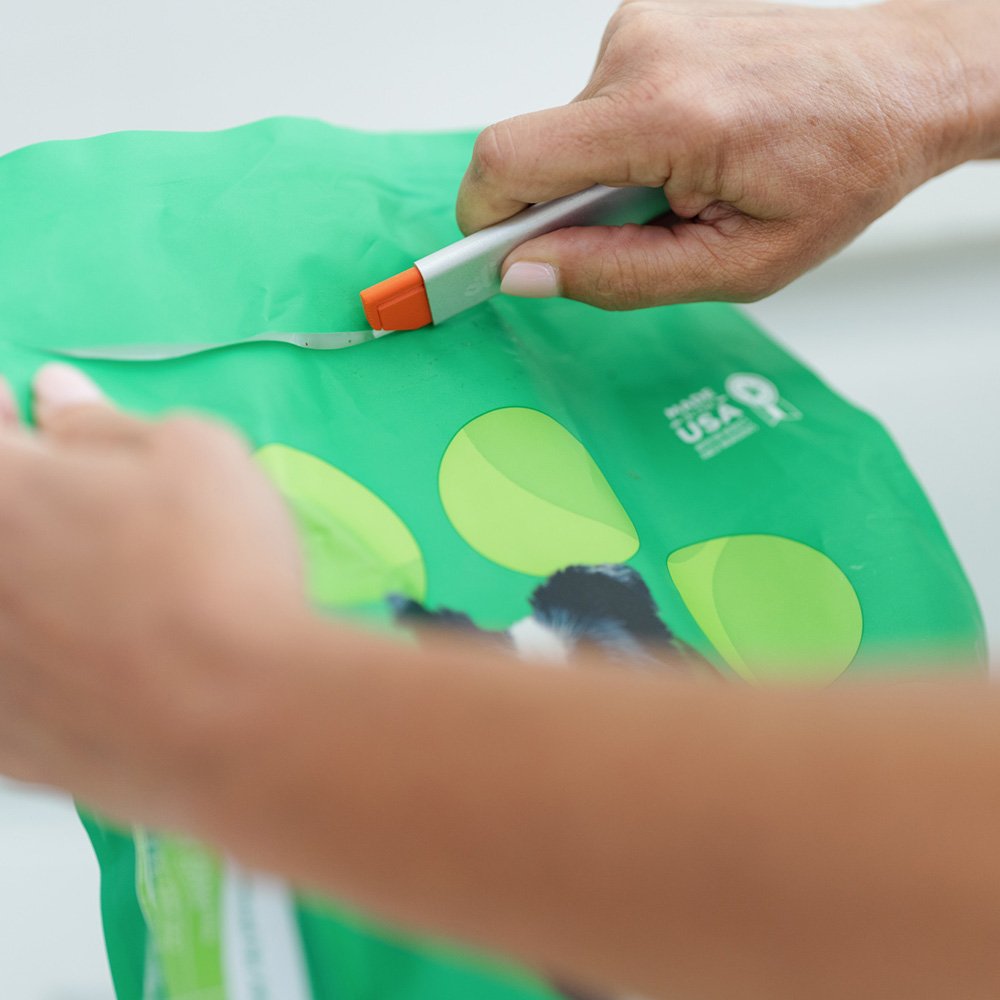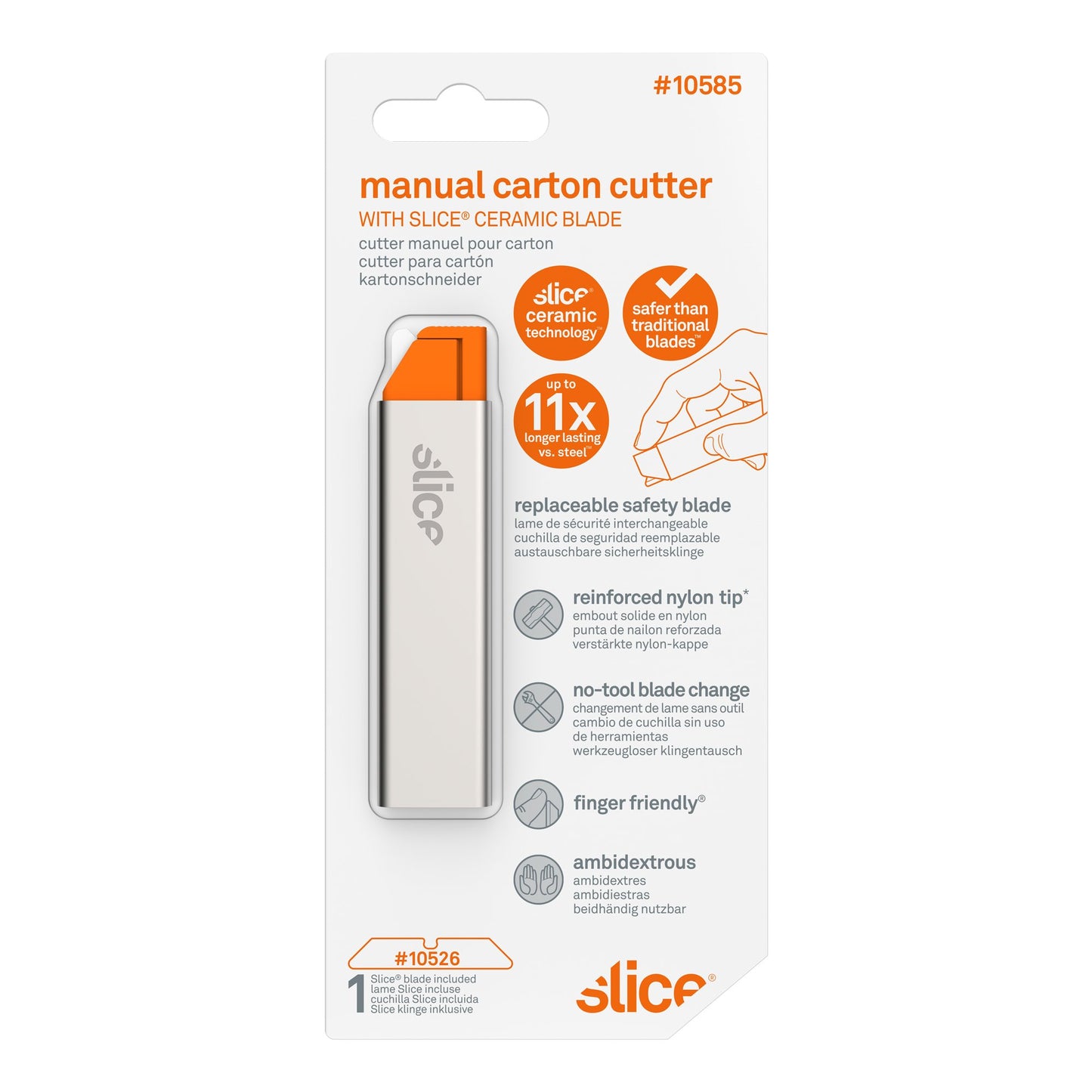Faca Manual para Cartão
SKU #10585
A Faca Manual para Cartão Slice® 10585 é uma adição à nossa linha de facas de segurança. Tal como o nome sugere, o design desta ferramenta - com o seu comprimento de lâmina exposta e ângulo - é ideal para cartão de embalagem e cartão ondulado. A faca para cartão Slice (manual) tem uma dimensão de lâmina exposta suficiente para cortar qualquer caixa sem danificar o conteúdo. Basta deslizar a bainha de metal de proteção para cobrir e descobrir a lâmina conforme necessário. A 10585 é enviada com a lâmina para faca de segurança 10526 com ponta redonda. Tal como todas as ferramentas Slice, esta lâmina tem a nossa lateral finger-friendly®, que é quimicamente inerte, não enferruja e dura até 11 vezes mais quando comparada com uma lâmina de metal.
- Tipo de lâmina: ponta redonda
- Robusto cabo de nylon com bainha de metal resistente à acetona
- Design ambidestro
- Lâminas compatíveis: 10526, 10528
- Lâmina Finger-friendly® que dura 11 vezes mais que metal
- Lâmina quimicamente inerte que não enferruja
- Lâmina que não faz faíscas, não condutora, não magnética
- Lâmina não necessita de lubrificação
- Reduz as lesões, reduz os custos
- Troca de lâmina sem ferramentas
- SKU #10585
Great for:
- Opening boxes, packaging, and shrink wrap
- Slicing cardstock
- Removing coupons from cereal boxes
Product Specifications
Product Specifications
Cutting Depth:
Material: GFN, aluminum, zirconium oxide
Dimensions: L x W x H
Weight: 0.07 lbWhat Customers Are Saying
-
 I buy these knives for my inspection crew at work. Very durable and cut through cardboard easily. I liked them so much I bought a few for home as well.
I buy these knives for my inspection crew at work. Very durable and cut through cardboard easily. I liked them so much I bought a few for home as well.
Charles Wiggins
-
 This thing is a blast. It’s one of those things that feels good when you use it. It glides through the tape on my packages. I love that sensation. I also use it on my small envelopes, vitamin difficult bottles and large envelope packages.
This thing is a blast. It’s one of those things that feels good when you use it. It glides through the tape on my packages. I love that sensation. I also use it on my small envelopes, vitamin difficult bottles and large envelope packages.
Joan
-
 I love this. It’s small & so easy to use. I can’t believe how well it cuts open packages yet it doesn’t feel sharp to the touch. It’s awesome! I bought several & they make great stocking stuffers.
I love this. It’s small & so easy to use. I can’t believe how well it cuts open packages yet it doesn’t feel sharp to the touch. It’s awesome! I bought several & they make great stocking stuffers.
Sue Messing
Videos
-
Replacing Carton Cutter Blades
FAQ
What Is a Carton Cutter?
>While many people use utility knives for this purpose and handle designs vary, carton knives typically have a thin, flat rectangular handle with a sheath that slides over the housing to expose or protect the blade. Many use standard metal utility blades while others use (dangerous) snap-off metal blades.These tools are frequently smaller than standard utility cutters and fit easily in the palm of your hand.
How Are Slice Carton Cutters Safer?
How Do I Change the Blade in the Slice Carton Cutter?
Ensure that the new blade lines up with the notch in the housing and close the housing. Before you slide the metal sheath back on, check for the notch on the bottom of the sheath. Line up the blade with this notch and slide the housing back in. This will ensure that the stopper on the housing lines up with the notch on the sheath, limiting how far down the sheath can slide.

